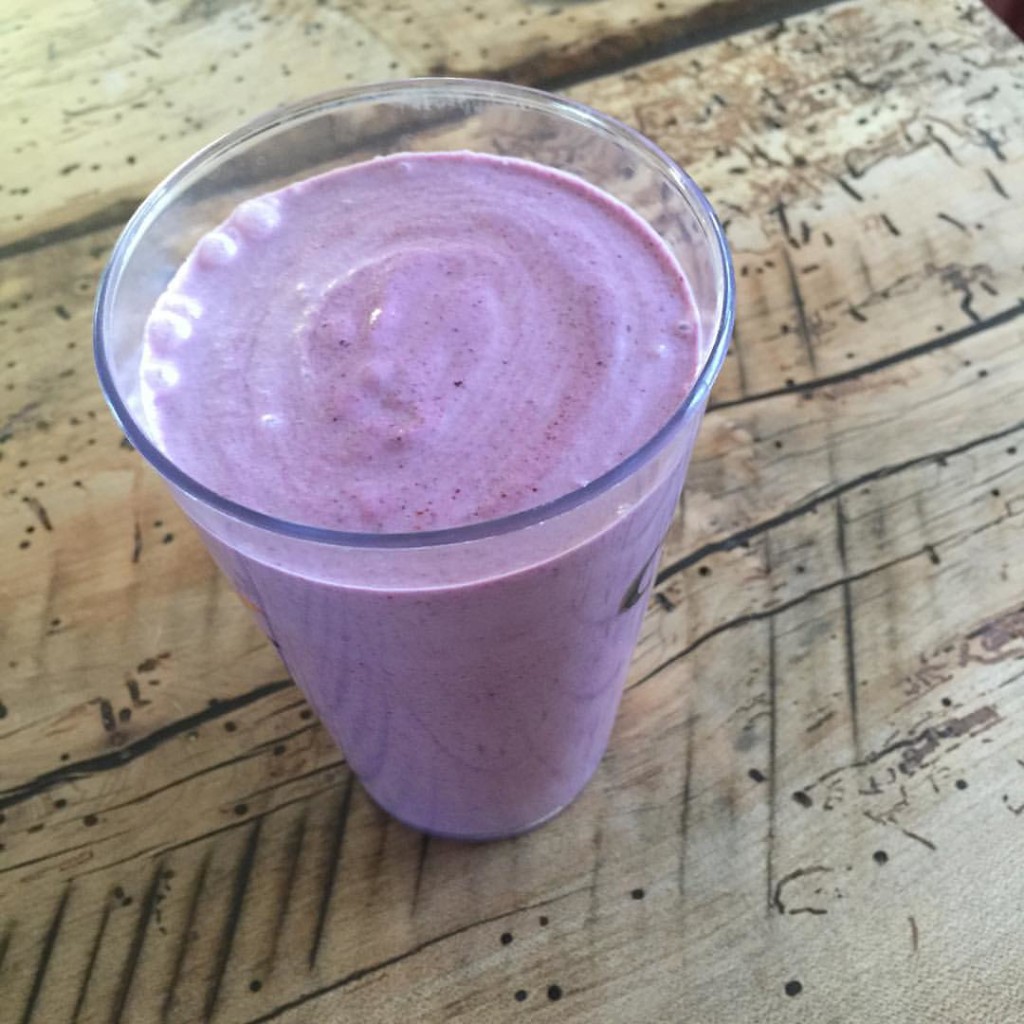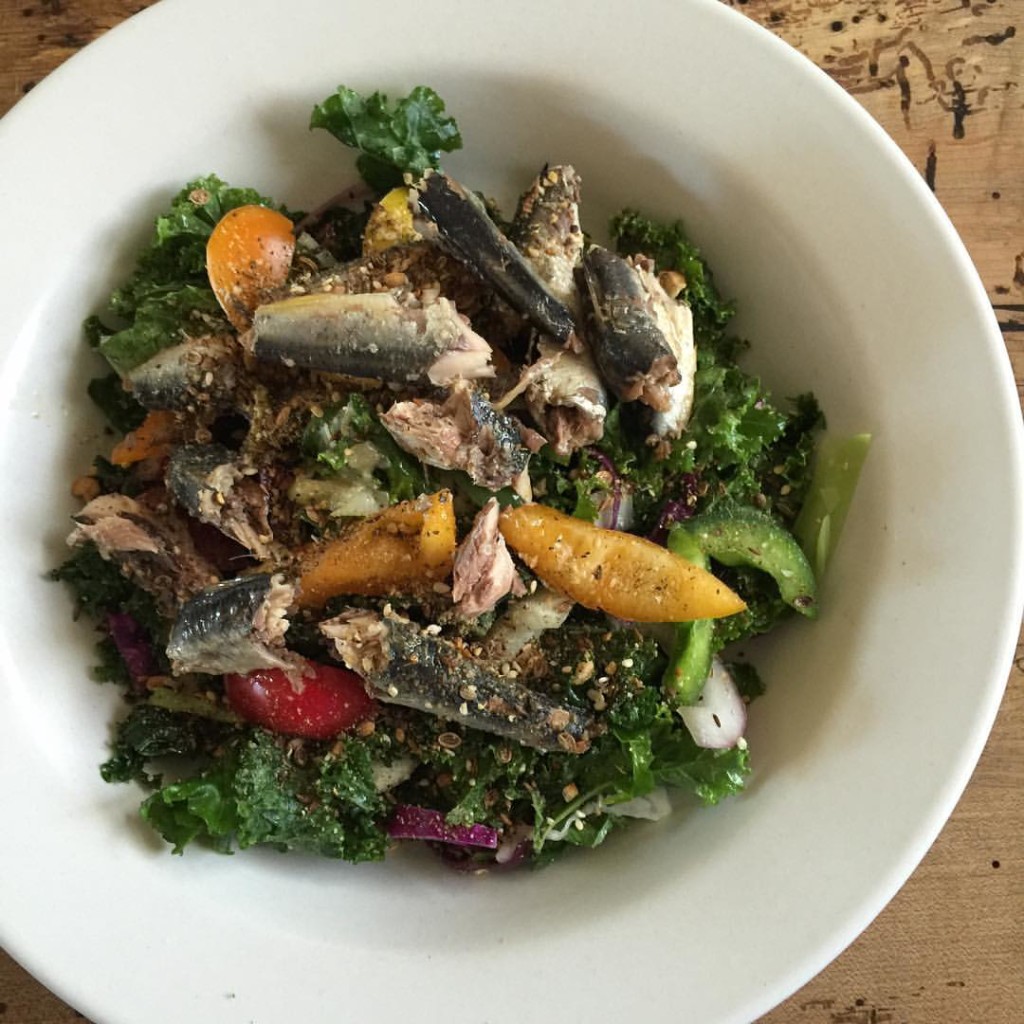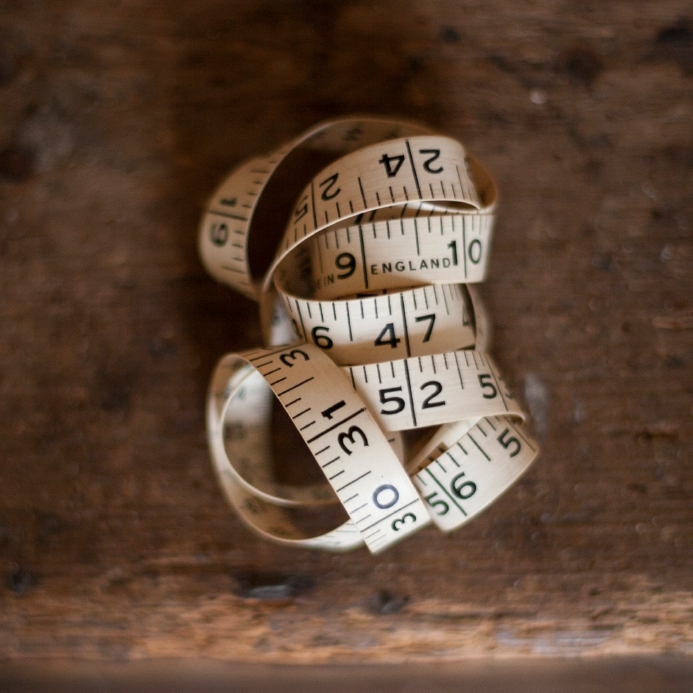The new year started with a detox, which didn’t go well.
Day one was like being shot out of a cannon: a high-fat green smoothie for breakfast that tasted, as my friend Lisa says, like lawn clippings.
I was hoping that our new Vitamix would do something spectacular to it, like turn it into poached eggs on toast.
We can make it better, I said to Susan, who managed to drink the whole thing; I choked down two gulps and poured the rest down the drain, praying that the chia seeds didn’t hold a convention and plug it up.
Day two began with trepidation: a high-fat fruit smoothie that was more palatable. Even throwing a whole quarter lemon — pith, peel, and all — into the Vitamix didn’t turn me off. The result was pleasant enough — fruity, a little bitter — even though the chia made the consistency more like drinking almost-set jello than a smoothie.
Day three started with the same thing, except that it actually began on the night of Day two, when Susan dutifully soaked the chia seeds and the nuts (almonds, Brazil nuts) to make them more digestible. Which they were, mostly. Susan gets up every morning at five a.m. for a very long daily commute into New York, and the first few days I got up with her as a show of solidarity while she stood in the kitchen, bleary-eyed, and turned on the Vitamix long before the break of day. She put it on the smoothie setting, dumped in the ingredients, flipped the switch, and woke the neighborhood.
Lunches and dinners were easier; there was always a lean protein (4-6 ounces; I weighed everything), salads, greens, non-starchy vegetables, no grains, no dairy, no gluten, no wine, no fruit, except for the tomato that was part of one of the dinner recipes. It’s January in New England: Go find a fresh, non-mealy tomato that doesn’t taste like you’re chewing on cotton balls. There’s a reason why we eat food that’s fresh and seasonal; this is just a very small part of it.
We made it into day four; Susan’s mild sugar cravings had in fact slowed. Mine were non-existent to begin with because I have no sweet tooth. Never have. At the end of the four days, I had gained a pound; Susan lost four ounces.
We were depressed; we’d had enough.
This particular detox is part of a diet that I hold — and I’m quite serious about this — in very high esteem; the folks who have developed it did so as a way to help people unravel severe sugar addiction and blood sugar issues which come as a natural by-product of the SAD (Standard American Diet). It’s brutal — it has to be; even though we don’t eat the SAD in my house by a long shot, I experienced a massive migraine by day two and some flu-like symptoms that go hand-in-hand with detox — and for the people who desperately need it, I believe it works and results, ultimately, in saner, less deadly eating habits and lower blood sugar, industrial food complex be damned.
But in our house, like many detoxing households, we don’t have deadly eating habits; we have good eating habits. To be clear, it was not a total flop for us: we came away from it — even just four days of it — with a better sense of portion control and the ability to acknowledge when we’re actually hungry versus bored, which helps us make better choices about what, and when, to eat. And that’s key.
So the reasons behind our doing the detox were murky. Sure: we wanted to feel clean, and a bit lighter after the onslaught of rich holiday foods. But again, we don’t have the standard American diet; the quality of the food we eat is very high because we are lucky enough to be able to afford it; our portions are never outlandish, even at the higher end of normal; we don’t need to detox from sugar or dairy — I’m not much for either and even when I eat cheese, it’s generally only goat or sheep, and almost always raw. I eat gluten free because bad things happen if I don’t, and they have since I was three years old — this is not something I need to prove to some self-anointed, self-appointed naysayer (and if you are GF, neither do you) — and I almost always feel better when I eat more fish, less meat, and I move my body: walking, light running, yoga. Being outside.
So, why the detox? Why the diet?
Because, like many women of a certain age — I’m 52, and a former serious athlete (tennis, squash, swimming, skiing) — I look in the mirror, and it appears that my bubbe from the old country is staring back at me, even though she’s been dead for years. I’m carrying fifteen extra pounds that, no matter what I do — detox, no detox; five-day-a-week workouts; small portions; less wine; on and on and on — I can’t drop.
How’s the gym going, my mother asks every day when I call to check in on her. This is her backhanded way of asking: lose any weight lately? My mother is five foot five (she’s dropped two inches in recent years), rail-thin, slender, an ectomorph. She wasn’t always; as a child, she was round and chubby, and carried her weight in her cheeks and her belly, the way I do. She became a singer and a model; she starved herself into size two thinness, which is where she remains, even now.
Dieting works, she says to me, apropos of nothing. Just look at me.
So I look at her. And I look at the magazines and blogs and books that dangle the promise of a different, more fabulous me over my parched, non-pouty, middle-aged lips like I was Tantalus himself.
Somewhere in the recesses of my brain, in the twisted part of my cerebral cortex that understands that skinny is better and beautiful is best and young is the prize that every woman wants, I have received and absorbed like a sponge the message that I am not thin enough; I am not pretty enough; I am not young enough. If I drop fifteen pounds, I’ll be thirty-five again. Almost certainly, my blood pressure will come down; I’ll get off my beta blocker and my statin, and that’s great. But that’s not why most women of a certain age, once a year, hit the reset button, and try again.
And it’s not why I do it.
This is the root of it; the gnarly spider’s web that catches us in its sticky threads and won’t let us go.
January 1st: we detox. We diet. We wipe the slate clean. We inhabit the promise of being someone else: the me without the fifteen extra pounds, the double chin, the aching joints, the graying hair, the dimming complexion.
We inhabit the promise of happiness, of acceptability.
We become the woman we used to be.
Would that we could simply take care of our bodies and souls as the years pass — eat well, be physically active, love, be loved, take time to breathe and slow down — and be who we are.







